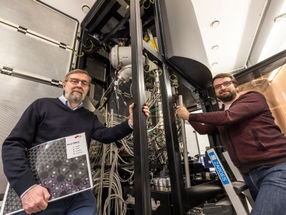A new future for an old crop: barley enters the genomics age
The barley genome is almost twice the size of that of humans and determining the sequence of its DNA has proved to be a major challenge. This paper published in Nature is a detailed overview of the functional portions of the barley genome, revealing the order and structure of its 26,000 genes. First cultivated more than 15,000 years ago, barley is the world's fourth most important cereal crop both in terms of area of cultivation and in quantity of grain produced.
The barley genome is almost twice the size of that of humans and determining the sequence of its DNA has proved to be a major challenge. This is mainly because its genome contains a large proportion of closely related sequences, which are difficult to piece together.
A Japanese team led by Kazuhiro Sato of Okayama University participated in the International Barley Sequencing Consortium (IBSC). They succeeded in producing a high resolution assembly of the majority of barley genes in linear order.
By developing and applying a series of innovative strategies that allowed them to circumvent these difficulties, IBSC describes the location of dynamic regions of the genome that carry genes conferring resistance to diseases. This achievement also highlights the unprecedented detail in the differences (15 million positions) between a range of different barley cultivars. The report provides a detailed overview of the functional portions of the barley genome, revealing the order and structure of its 26,000 genes.
Access to the assembled catalogue of gene sequences will streamline efforts to improve barley production by breeding varieties that are better able to withstand disease and deal with adverse environmental conditions such as drought and heat stress.
Original publication
Other news from the department science

Get the analytics and lab tech industry in your inbox
From now on, don't miss a thing: Our newsletter for analytics and lab technology brings you up to date every Tuesday. The latest industry news, product highlights and innovations - compact and easy to understand in your inbox. Researched by us so you don't have to.
























































